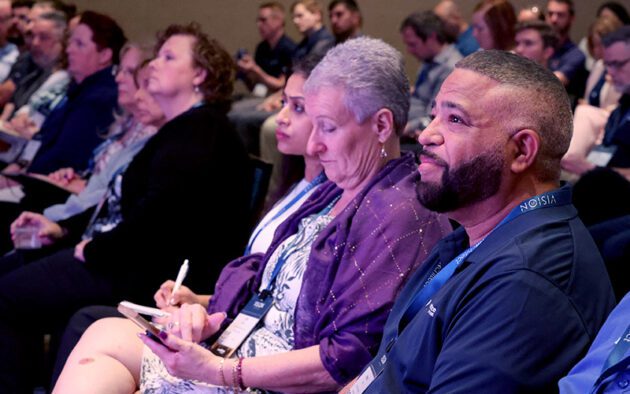According to Gallup’s State of the Global Workplace 2023 Report, while employee engagement appears to be rebounding to some extent after two years of decline, nearly six in 10 employees were still viewed as falling into the “quiet quitting” category, basically meaning they are psychologically disengaged from work. As to the percentage of workers finding their work meaningful and feeling connected to their team, manager, and employer, this was a modest 23%, which also suggests an inability to connect to the enterprise’s greater mission or purpose.
Feeling less connected to the mission and purpose of one’s employer means someone is likely going to be less committed to results and thus less productive. Further, this often translates to a mindset at work that won’t have a positive effect on teammates. Additionally, while the ensuing higher turnover that typically follows such dynamics usually means mounting staff replacement costs, it can also translate to more striking costs in the form of customers leaving or missed opportunities to broaden customer relationships.
Moving to a broader perspective on what is referred to as the employee experience, in 2022,
and before that in 2017, I published articles in Blinkist Business and HR Executive that delved into what contributes to a superior (EX). These were based on decades of work on all sides of the HCM value chain. Foundational pillars highlighted in those explorations included the following:
-
The universal and intrinsic need to do meaningful work, to feel valued, and be productive.
-
Perceiving fairness in how one is evaluated and rewarded at work.
-
Having visibility into how one’s career will advance.
-
The recognition that most people want to work where their total well-being is important to their employer.
From a technology experience perspective, any EX-framework should further revolve around the systems and tools being used at work that serve to enhance vs. drain employee engagement and job satisfaction.
Quality Employee Experience for Remote and Deskless Workers Demands Better Scheduling
Feeling connected with one’s team, feeling valued, and having one’s interests and welfare noticeably cared about at work are notions that all intersect with the workforce management enterprise, or Workforce Management (WFM) software domain, which is comprised of time and attendance tracking and absence (including Leave of Absence) administration. That said, similarly central to the WFM arena is the set of activities that fall under workforce scheduling, arguably the most relevant to our EX discussion. We know that attracting and retaining talent logically starts with respecting the needs of each employee, and in the context of scheduling management, this means, as one example, providing workers with viable options to resolve conflicts and dilemmas related to balancing their personal and work obligations.
All of this is logically more challenging for an employer to get right when it comes to deskless and field-based workers, yet it’s every bit as critical for this workforce segment. When in-person interaction with colleagues and other on-site activities that drive team and corporate cultural cohesion are much less frequent, employers should go the extra mile to offset the current “disconnected workers” trend.
How Flexible Scheduling Connects Workers to the Company Mission
It seems appropriate here to distinguish deskless workers from remote workers. While there can be an overlap between the two worker groups with various aspects of the employee experience similarly pertaining to both segments, typically non-exempt (from overtime), hourly paid deskless workers in the U.S. can be assigned different schedules and shifts each day. Remote workers are often professional workers with quite predictable schedules, and they usually have a desk and phone as their base of operation.
This is one way the topic of worker schedules enters the EX-conversation. More specifically, and with respect to best-in-class WFM technology platforms, here are three employee scheduling capabilities that can all help organizations balance the needs, interests, and goals of employees and employers:
- Allowing employee-initiated shift swap requests to resolve conflicts (with options for manager approval or rules-based auto approval).
- Supporting the practice of flexible work arrangements that communicate when employees must be working and when they have more flexibility.
- Scheduling top talent during peak hours and pairing them with less-experienced employees to accelerate training.
Today’s employees feel less connected to the purpose and mission of their employer, which means they are less connected to over-arching business plans and priorities, to their colleagues and teams, and often to their jobs as well. This dynamic is prevalent among remote workers and even more prominent among deskless workers. Given these research-based facts, organizations that seek to elevate the employee experience in order to drive up productivity and drive down costs, should also be examining their workforce scheduling processes and enabling tools.
Modern Workforce Management Prioritizes Worker Flexibility and Autonomy
Ideally, scheduling software will provide each employee whose workday is at least partly governed by a work schedule with a sense that they are largely the architect of their own employee experience. The hallmarks providing this autonomy include feeling valued or that one’s needs, interests, and goals—plus the daily challenges that sit at the intersection of life and work—are clearly on the radar of their employer and their manager.
Key capabilities that serve these purposes can be described as personalization and flexibility enabling capabilities. Frankly, these themes should be central for enterprises selecting a WFM provider—when evaluating potential vendors, they must excel at providing scheduling tools that meet these needs. Allowing a worker to easily request or make changes in their schedule—even on short notice, while also considering an employee’s longer range career growth goals and supporting learning opportunities—is the essence of applying an EX-lens to how workers are managed. This is truly the mission of modern WFM software, a mission all workers can feel connected to.
Ready to build a better employee experience for your employees? Learn how WorkForce Software’s Scheduling capabilities can give your workforce greater control and flexibility.





